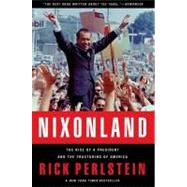| Preface | |
| Hell in the City of Angels | |
| The Orthogonian | |
| The Stench | |
| Ronald Reagan | |
| Long, Hot Summer | |
| School Was in Session... | |
| Batting Average | |
| The Bombing | |
| Summer of Love | |
| In Which a Cruise Ship Full of Governors Inspires Considerations on the Nature of Old and New Politics | |
| Fed-up-niks | |
| The Sky's the Limit | |
| Violence | |
| From Miami to the Siege of Chicago | |
| Wednesday, August 28, 1968 | |
| Winning | |
| The First One Hundred Days | |
| Trust | |
| If Gold Rust | |
| The Presidential Offensive | |
| The Polarization | |
| Tourniquet | |
| Mayday | |
| Purity | |
| Agnew's Election | |
| How to Survive the Debacle | |
| Cruelest Month | |
| Ping-Pong | |
| The Coven | |
| The Party of Jefferson, Jackson, and George Wallace | |
| The Spring Offensive | |
| Celebrities | |
| In Which Playboy Bunnies, and Barbarella, and Tanya, Inspire Theoretical Considerations upon the Nature of Democracy | |
| Not Half Enough | |
| Notes | |
| Selected Bibliography | |
| Acknowledgments | |
| Index | |
| Table of Contents provided by Publisher. All Rights Reserved. |








